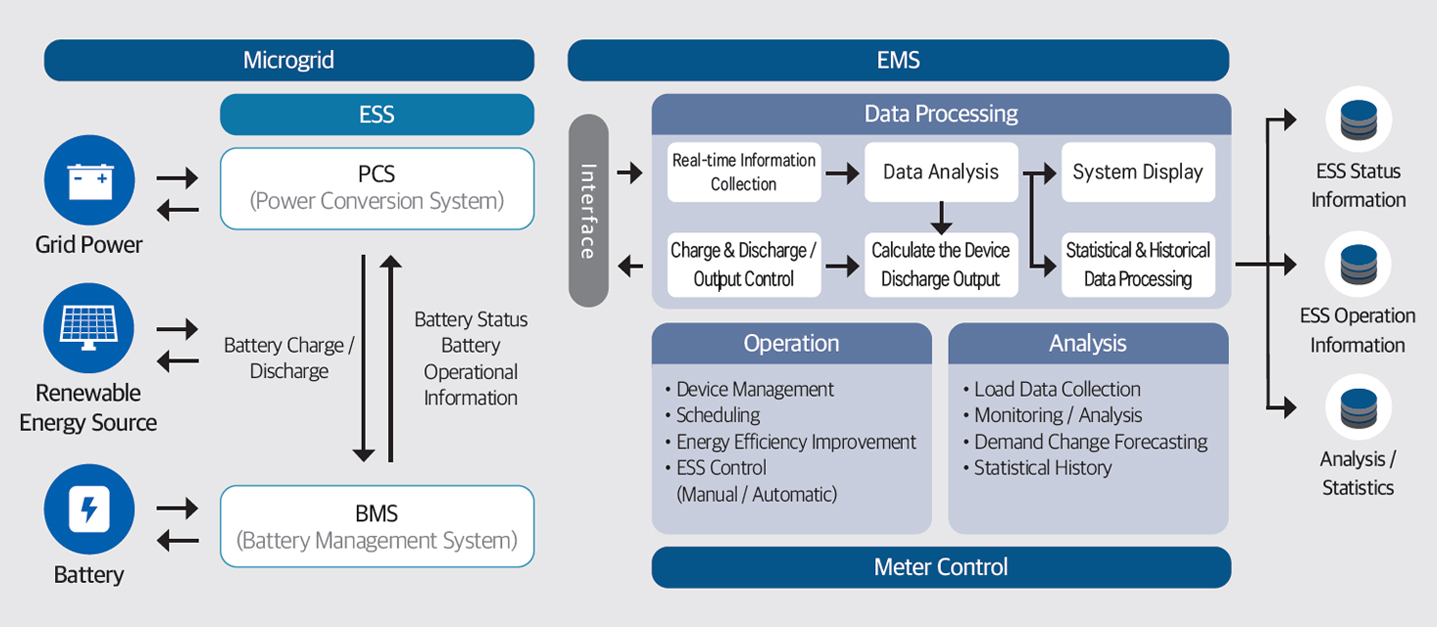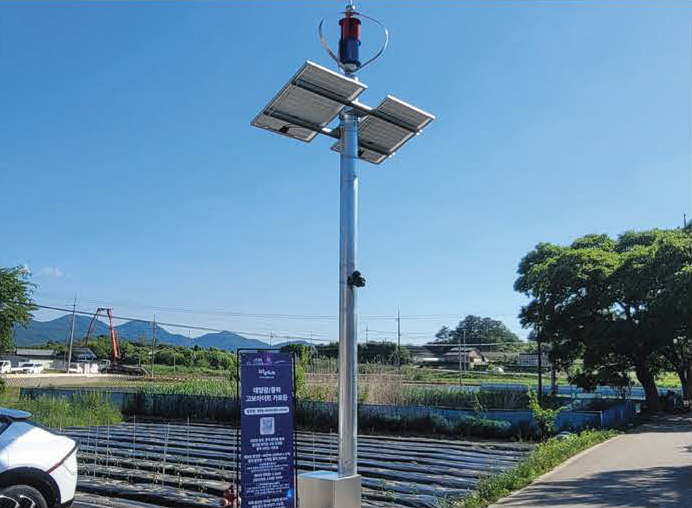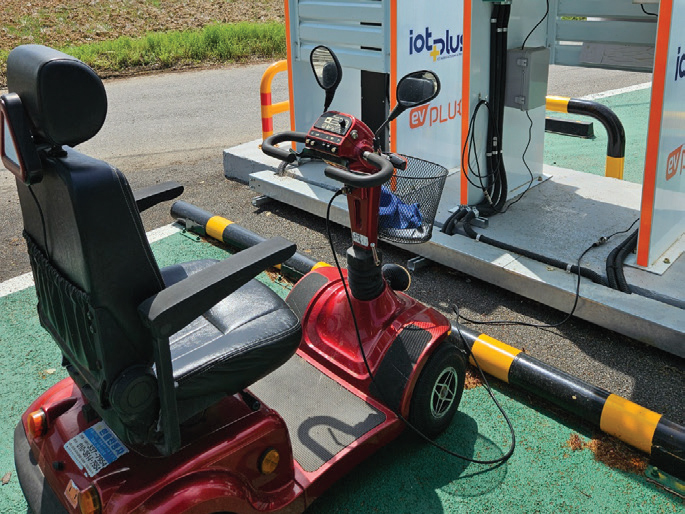Hybrid Inverter (All-in-one)
Hi-1015
Hybrid Inverter
Our Hybrid Inverter, Hi-1015, is an integrated system that stores electricity generated from renewable energy (photovoltaic and wind power) and grid power in the Energy Storage System (ESS) for later use.

IoT_Energy Management System v 1.0

EMS(Energy Management System)
- Real-time microgrid power monitoring
- Provides various statistical functions to support the formulation of efficient energy policies
- Detailed control of battery charging and discharging
- Remote demand response (DR) control available
-

Wireless Temperature-and-Humidity Safety Sensor
- A wireless temperature-and-humidity sensor that operates without power using energy harvesting technology
- Prevents electrical safety accidents caused by overheating and moisture
- Enables real-time monitoring and remote power control
-

Smart Electrical Safety Switch
- Automatically cuts off power in case of overheating or leakage
- Allows real-time monitoring and on/off control remotely
- Supports remote control through IoT switches
- Prevents electric shocks and fire accidents
- Provides remote support for regular leakage tests
Inverter Operation Screen
Configuration Diagram

Microgrid using the Hybrid Inverter (Hybrid Inverter + ESS + EMS)
Configuration
- PCS(Power Conversion System)
- EMS(Energy Management System)
- ESS(Energy Storage System)
- V2L(Vehicle to Load)
- PMS(Power Management System)
- Safety Sensor & Safety Switch
Inverter Specifications
Hybrid Inverter (Hi-1015, All-in-one)
| Classification | Details | |
|---|---|---|
| AC Input (Power Supply / Grid Side) |
Rated (Continuous) Power | 5 kW |
| Voltage & Frequency | 1 ph AC 170-280V -10%/+15%, 50/60Hz 土5% | |
| Max. Input Current | 40 Arms | |
| Power Factor | >0.99 (@Nominal) | |
| AC Output (Load Side) |
Rated (Continuous) Power | 5 kW |
| Voltage & Frequency | 1ph AC 220/230/240V ±5%, 50/60Hz ±0.1% | |
| Rated Output Current | 21 Arms | |
| DC-AC Conversion Efficiency |
95% | |
| Battery | Energy Capacity | 9.2kWh/13.8kWh(1 O~15kWh) |
| Cell Type | Lithium-ion | |
| Input Voltage Range | DC 44.96 ~ 55.4V (DC 51.1V nom) | |
| Overcharge Protection | DC 62V | |
| DC-AC Conversion Efficiency | 93% | |
| PV Input (MPPT) |
Max. Input Power | 5 kW |
| MPPT Voltage Range | DC 120~430V | |
| Maximum / PV Open-ckt Voltage |
DC 450V | |
| Max. Input Current | 40 Adc | |
| Common Chrs | Man-machine Interface | 7" full color display panel with touch screen |
| Remote Control Interface | modbus/TCP | |
| Protective Functions | Overcurrent, Output Short, Overload, Over temperature, Output voltage abnormal |
|
| Battery voltage high/low, Battery Disconnection | ||
| PV overcurrent, PV overvoltage | ||
| Mechanic Chrs | Dimension (W xH xD) / Weight (Approx.) |
700x1312x298mm/150kg(10kWh) |
| Environment | Enclosure Protection Rating | IP21 (Indoor Installation) |
| Operating Ambient Temperatures |
-10 ~ +50 dec C | |
| Compatible Standards | EMC | IEC/KN 61000-6-2, CISPR/KN 11 |
| Safety | IEC/K 62477-1(2011-12) | |
Expected Benefits
- Addressing the drawbacks of renewable energy generation with built-in batteries
- Cost reduction & contribution to NET ZERO through renewable energy generation rate
- Safe & efficient power control through real-time monitoring and remote control
- Reducing operation & management costs with inverter and integrated-battery

Utilization of V2L(Vehicle to Load)
- Emergency power supply system for buildings using V2L function
※ In case of a power emergency, power can be supplied from an electric vehicle to homes or facilities

Building an Energy-Self-Sufficient Village
Renewable Energy (RE100) Village (Self-consumption Type)

Features
Self-sufficient energy for self-consumption using renewable energy sources (Solar & Wind)
Renewable Energy Generation Community Enterprise (Energy Prosumer Type)

Features
Selling energy through community enterprises by generating renewable energy in shared spaces
Dae-sil Village, Bonghwang-myeon, Naju - Energy Self-Sufficiency Status
Expected Benefits
-
01

Reduction in electricity energy costs
-
02

Various free power support for village members
-
03

Emergency power support using electric vehicles (V2L)
-
04

Income generation by selling remaining power after use
Constructing Energy Welfare SystemA system that realizes rural energy welfare using renewable energy and Hybrid Inverter (Hi-1015)

 Free Supply
Free Supply

Haksan-Dongsan Village, Noh-an-myeon, Naju-si - Energy Welfare Status
System Configuration
| Classification | PV | Energy Storage System (ESS) | Charger | Indoor power | Operating Software | |
|---|---|---|---|---|---|---|
| Standard Model (Independent Type) | 5kW | 10kWh | Senior's Vehicles: 6 | Agricultural Electric Vehicles: 2 | Community Center | EMS, PMS, PCS, APP |
| General Type | 10kW | 20kWh | Senior's Vehicles: 6 | Agricultural Electric Vehicles: 2 | Community Center | EMS, PMS, PCS, APP |
| Premium Type | 15kW | 50kWh | Senior's Vehicles: 6 | Agricultural Electric Vehicles: 2 | Community Center | EMS, PMS, PCS, APP |
Installation options: Electric vehicle chargers (7kW, 15kW, 25kW). Additional options are applicable only to the general and premium types.
Expected Benefits
-
01 Community Welfare

- Free charging for rural e-mobility
- Contributing to efficient power usage
- Providing mobility convenience for the transportation disadvantaged
- Reducing power costs for village public facilities
- Contributing to closing the gap in electric vehicle charging infrastructure
-
02 Community

- Creating employment in the relevant field
- Contributing to the development of a sustainable tourism industry
- Supporting the use of local currency
- Developing various tourism contents through incentives for electric vehicles
-
03 Environment

- Contributing to the expansion of electric vehicle adoption in rural areas
- Contributing to the reduction of old diesel vehicles in rural areas
- Preparing to address carbon trading schemes
- Contributing to NET ZERO in rural areas














